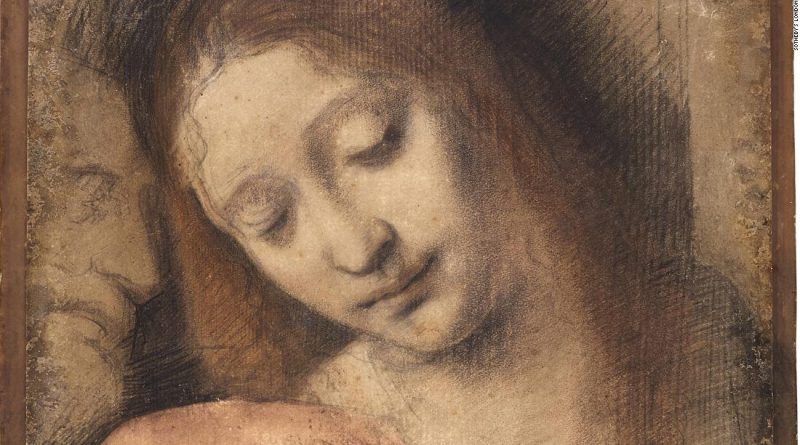Two rare studies of Leonardo da Vinci’s ‘The Last Supper’ are going up for auction
Two chalk and pastel studies of Leonardo da Vinci’s “The Last Supper” that once belonged to a 19th-century Dutch king will be up for auction next month.
Attributed to Leonardo’s assistant, Giovanni Antonio Boltraffio, each 25-by-18.5-inch drawing, made to be the actual size of the figures in the painting, are estimated to sell for up to £120,000 ($146,500) each.
A chalk and pastel study depicting the head of St. James the Less, attributed to Giovanni Antonio Boltraffio. Credit: Sotheby’s London
According to Cristiana Romalli, a senior specialist of Old Master drawings at Sotheby’s, experts aren’t exactly sure why the studies were produced, but said the large-scale portraits are “extremely rare.”
Part of a series of 11 similar studies of the apostles depicted in “The Last Supper,” the collection was once owned by the famous English painter Thomas Lawrence as well as William II, King of the Netherlands, before they were split up and held by several museums, galleries and private hands. This pair of drawings were last sold as separate lots in 2005 at Christie’s, fetching $96,000 for St. John and $57,600 for St. James.
Since then, “there’s not been anything of the sort on the market,” Romalli said in a phone interview from London.
“The Last Supper” was painted between 1495 and 1498 and became an emblematic work of the Italian Renaissance. It depicts Jesus at the heightened moment he announces that one of his twelve disciples will betray him, illustrating the expressive reactions of his most ardent followers. Leonardo indicated the culprit, Judas, by painting his face in shadow.

Visitors take photos of “The Last Supper” (“Il Cenacolo” or “L’Ultima Cena”), Italian artist Leonardo da Vinci’s late 15th-century mural painting housed by the refectory of the Convent of Santa Maria delle Grazie in Milan, on May 8, 2019. Credit: Miguel Medina/AFP/Getty Images
The iconic tableau, which attracted hundreds of thousands of visitors annually before the pandemic, is housed in the refectory of the convent of Santa Maria delle Grazie in Milan, Italy. But because of its deteriorating state, it is subject to ongoing conservation efforts.
Leonardo used an experimental dry fresco technique, which left the surface fragile and prone to flaking soon after it was completed. It has since endured poor environmental conditions and multiple restoration attempts over the centuries and was almost destroyed when the church was bombed during World War II. According to Sotheby’s, early copies from Leonardo’s assistants “are a precious indication of how the masterpiece must originally have looked.”
Christie’s employees pose in front of a painting entitled Salvator Mundi by Italian polymath Leonardo da Vinci at a photocall at Christie’s auction house in central London on October 22, 2017 ahead of its sale at Christie’s New York on November 15, 2017.
The drawings attributed to Boltraffio are “unusual” for their size and use of color, Romalli said.
“They are rather large works, for being on paper…so it makes them very striking,” she explained. “And then the pastel colors — that’s not something that you see often. Leonardo introduced the use of colored chalk in Italy, but it’s something which came from France.”
Two drawings from the set of 11 studies, including one that features the infamous head of Judas, reside in the collection of the Ackland Art Museum in Chapel Hill, North Carolina, though as the work of an unidentified artist. And in London, the Royal Academy of Arts has a full painted copy of the fresco, believed to be the work of Boltraffio and a second assistant, Giampietrino.
Boltraffio went on to carve out his own career, attracting patrons and earning commissions, including a Virgin and Child scene called “Pala Casio” in 1500, for a chapel near Bologna, which is now housed in the Louvre Museum in Paris. Though he was an artist who began “totally under the wing of Leonardo,” Romalli said, “he was able to develop something for himself.”
Top image caption: St. John the Evangelist with the profile of the head of St. Peter to the left, a study attributed to Giovanni Antonio Boltraffio.




